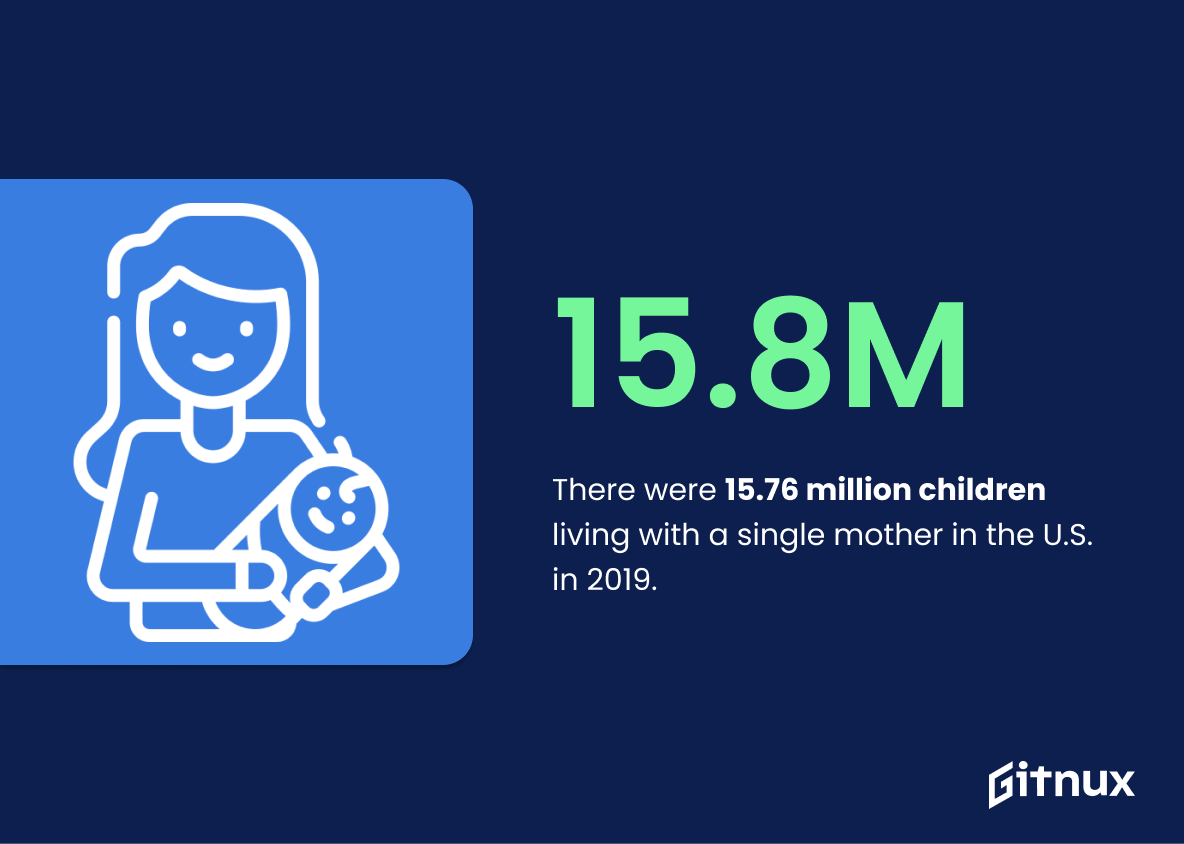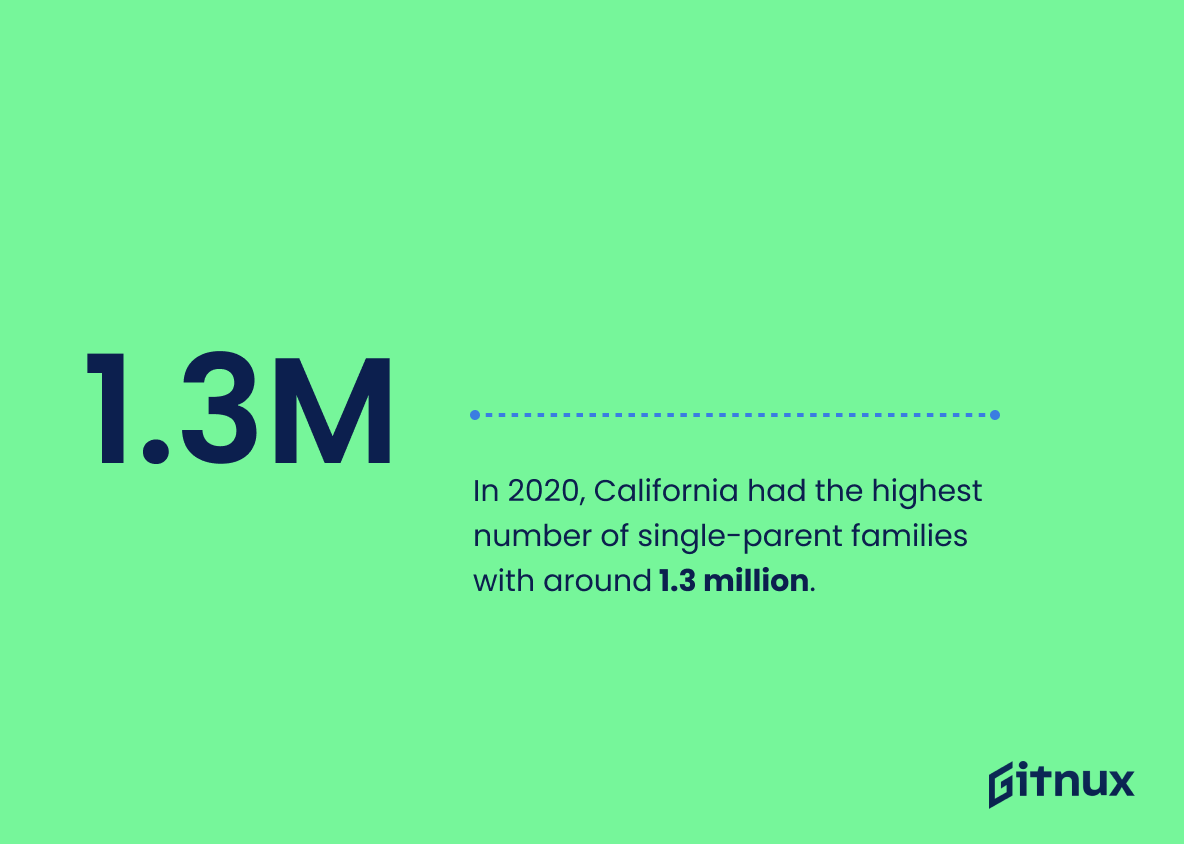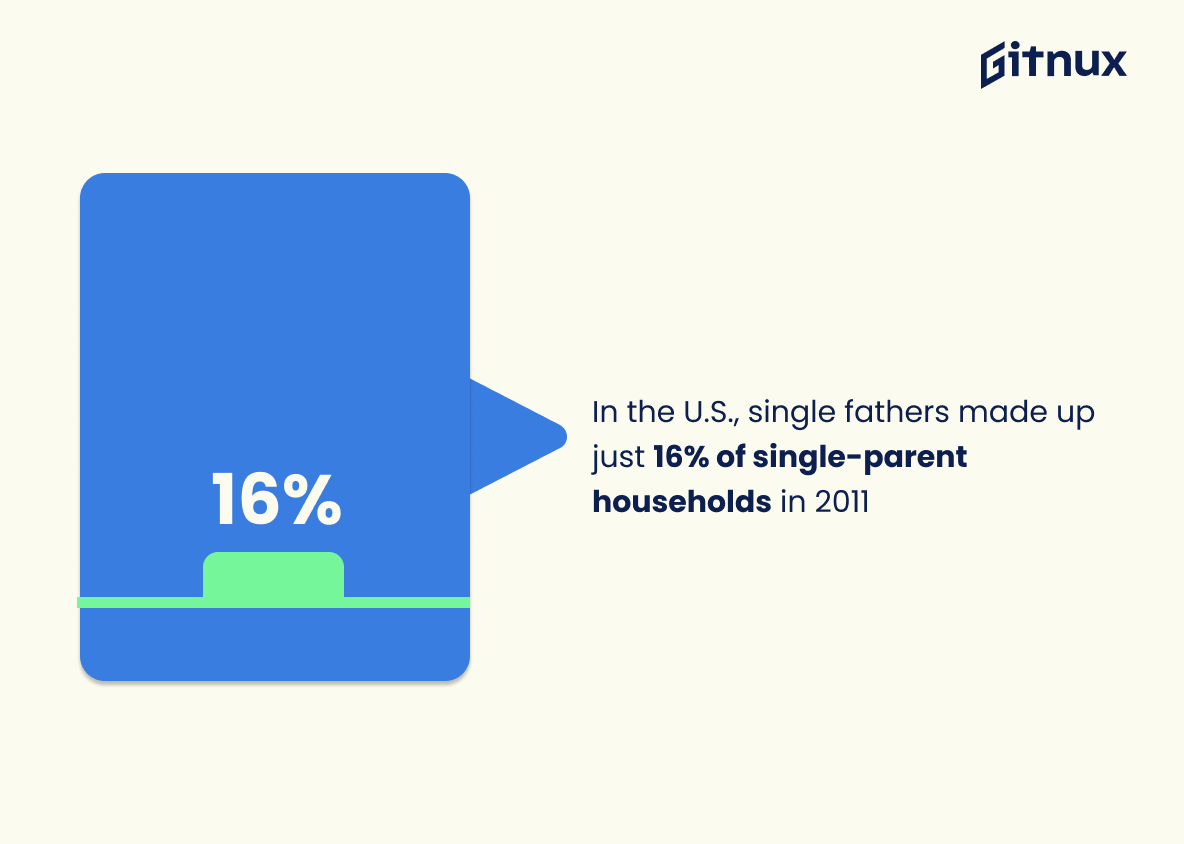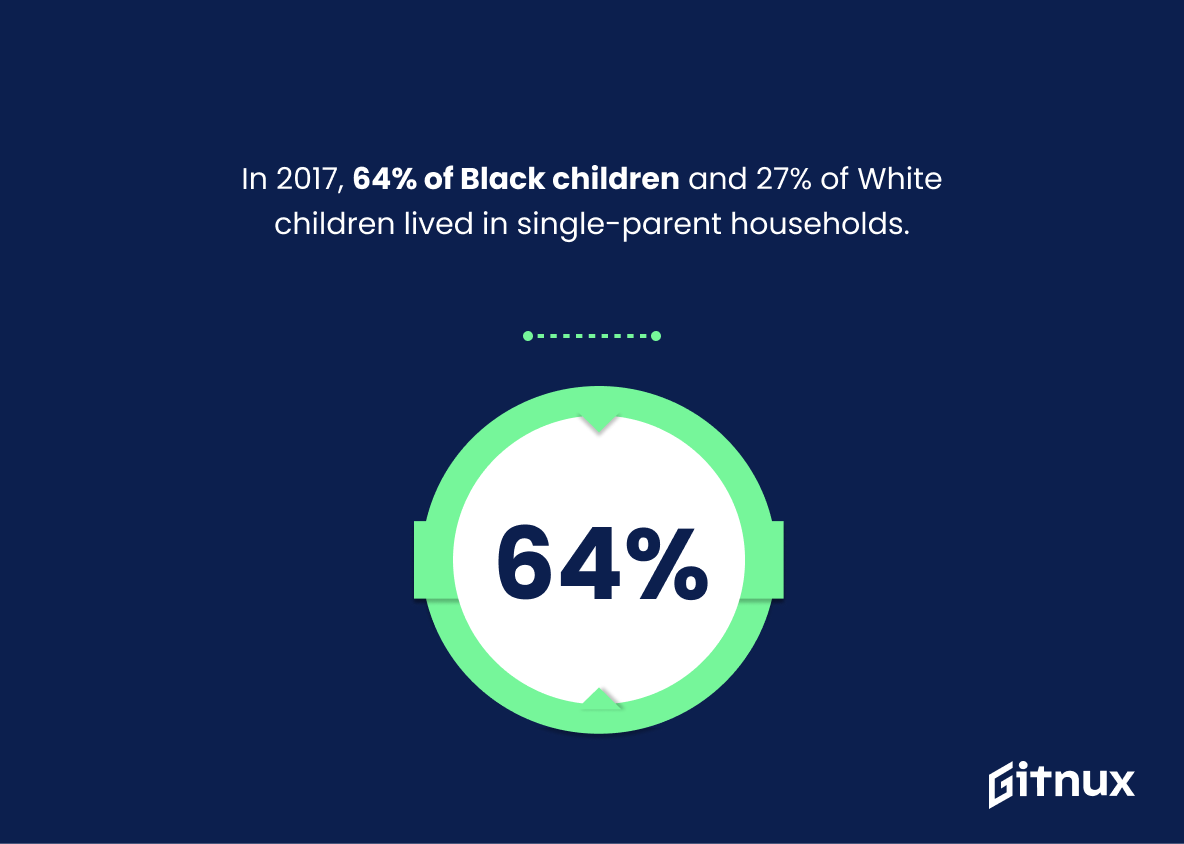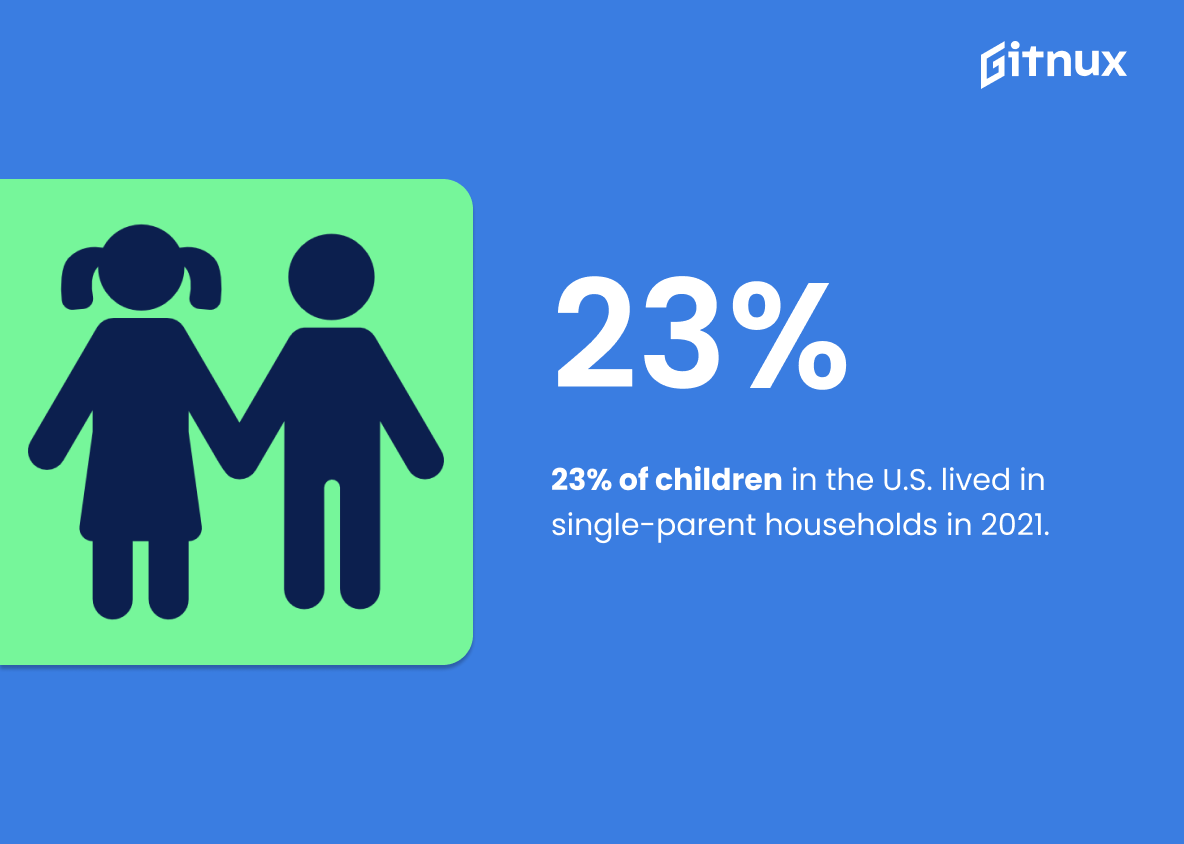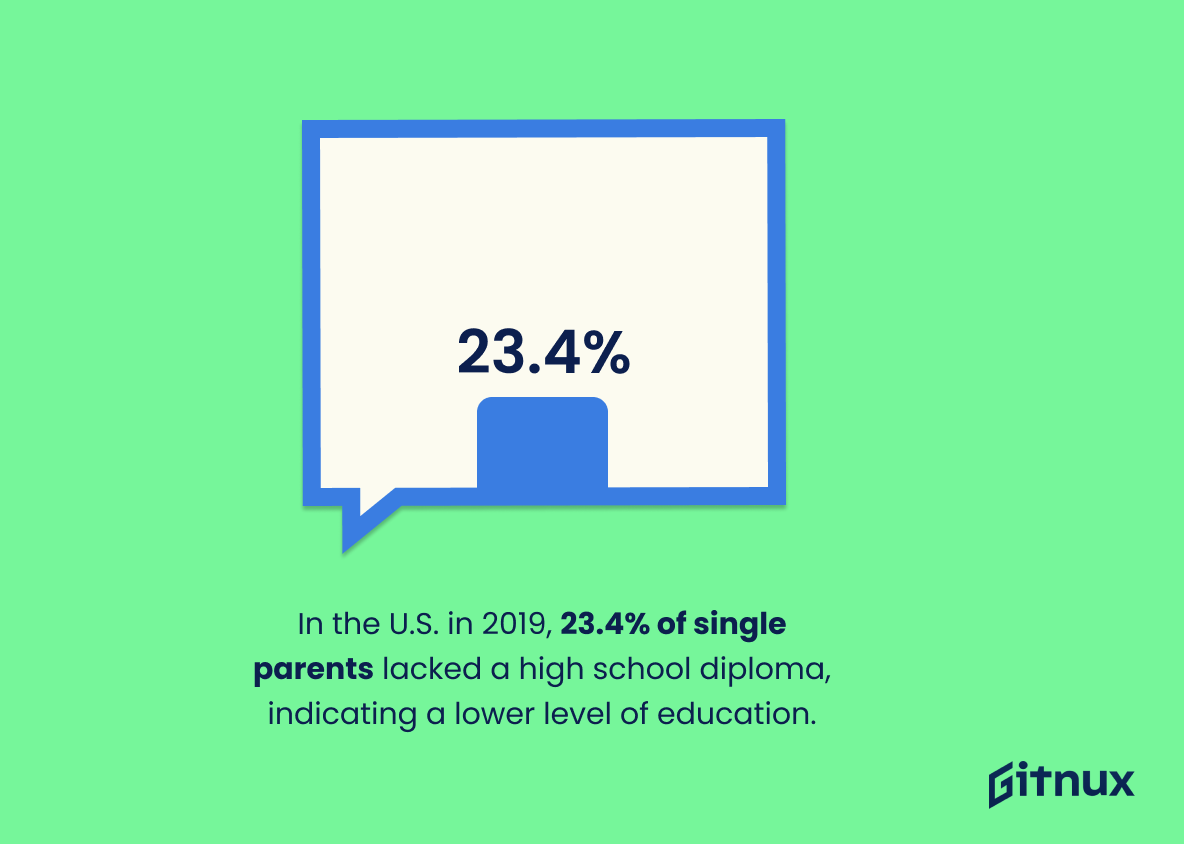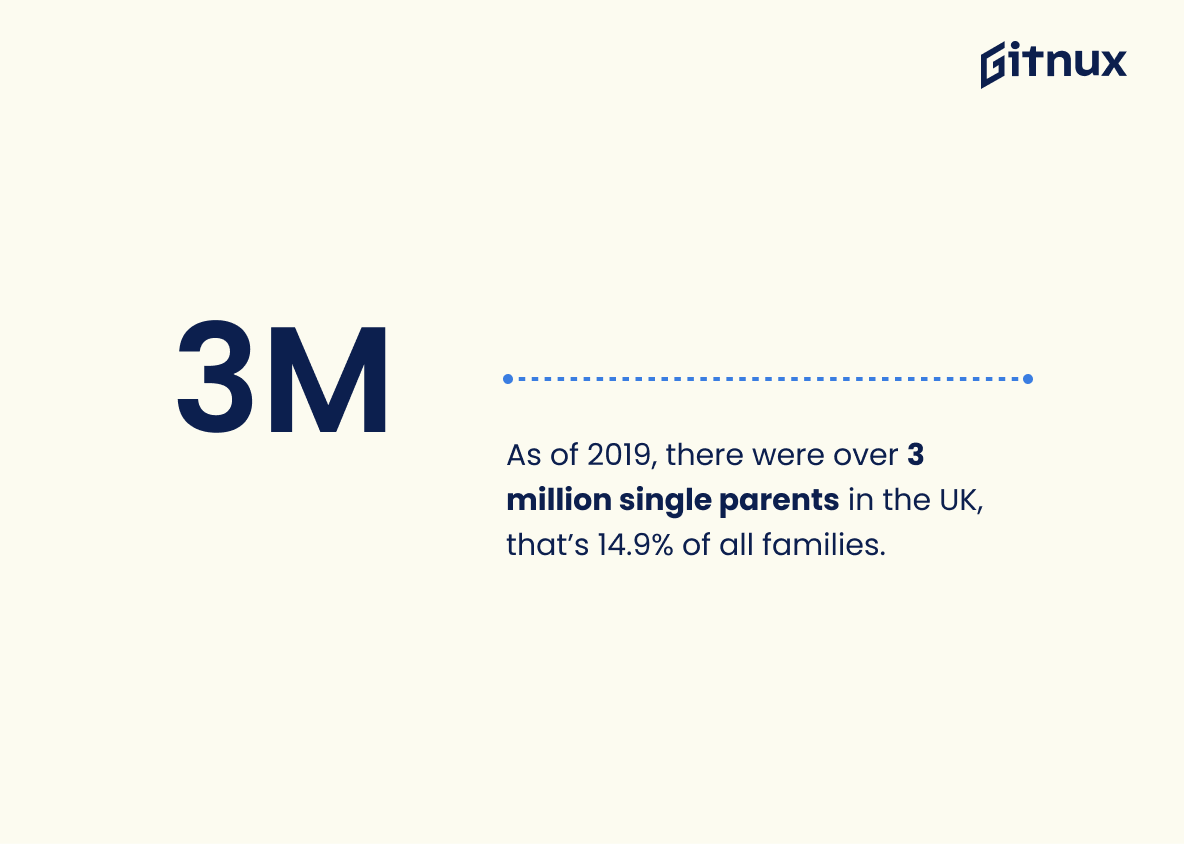In today’s constantly evolving society, the dynamics of family structures have experienced a significant shift, and single-parent households have increasingly become a part of this irreversible change. This blog post delves deep into the intricate world of single-parent households, offering a comprehensive examination of the statistics that define these unique family units. We will shed light on how single-parent households narrative impacts both societal norms and individual development.
From demographic patterns, financial implications to emotional complexities, this informative guide seeks to provide insightful data and examine the evolving landscape of single parenthood. Whether you are a researcher, a single parent, a policy maker or simply interested in societal trends, this post will give you a significant understanding of the statistics behind single-parent households.
The Latest Single Parent Households Statistics Unveiled
In 2019, there were about 15.76 million children living with a single mother in the United States.
Highlighting the statistic “In 2019, there were about 15.76 million children living with a single mother in the United States” threads a striking narrative in the tapestry of single-parent households. It punctuates the sheer magnitude of children growing up in such households, anchoring the need for policies and resources tailored towards these specific demographics.
This figure underscores the urgency for inclusivity, addressing stereotypes, and providing adequate support and understanding. The statistic, raw and unfiltered, offers a glimpse into the portrait of modern American families, driving the conversation around sociological changes, psychological impacts, and economic challenges associated with single-parent households. It sets a benchmark in responding to the evolving societal structure in an informed and empathetic manner.
The percentage of children living in single-parent households almost doubled from 12% in 1968 to 21% in 2019.
Shining a spotlight on the potent ripple effect of societal shifts, these figures weave a profound narrative of changing family structures; from a mere 12% in 1968, the sphere of single-parent households burgeoned to encompass 21% in 2019. Unveiling hearty resilience and unstinting devotion, single parents navigate the parenting journey solo, making this upsurge conducive to myriad discussions relevant to this blog post. From exploring the resources required to support these families to understanding the potential impacts on children, these numbers energize the conversation around single parenthood, shaping it with the weight of reality.
As of 2020, the U.S state with the highest number of single-parent families was California with approximately 1.3 million families.
Painting a vivid portrait, the data draws attention to California as a beacon, leading the charge with around 1.3 million single-parent households in 2020. It’s an illuminating insight highlighting California’s distinct demographic tapestry, suggesting that the traditional two-parent family system is evolving and giving way to alternative family structures in this state.
As one delves into the statistical mosaic of single-parent households, this information avails certain imperative implications. Moreover, it aids in understanding the profound shift in family dynamics, paints a comprehensive picture of the socioeconomic challenges and support needs for these families, and ultimately helps shape a more inclusive, tailored policies. Revealing such a transformative trend, the statistic formidably carves out the prominence of alternate household forms in today’s America.
In 2011, single fathers made up just 16% of single-parent households in the U.S.
Highlighting the fact that single fathers comprised merely 16% of single-parent households in the U.S. in 2011 provides a keen insight into the gender dynamics prevalent in solo parenting. This pivotal piece of data accentuates the overwhelming majority of single mother-led households, shedding light on the unique challenges faced by single mothers, who constitute the substantial majority.
Furthermore, this statistic triggers curiosity around the factors contributing to this disparity, such as societal norms, legal biases, or economic conditions. By painting a picture that clearly delineates between the experiences of single fathers and single mothers, policymakers, social advocates, and researchers can form a better understanding and develop targeted strategies to support these diverse groups.
In 2017, 64% of Black children were living in single-parent households, compared to 27% of White children.
In unraveling the narrative of single-parent households statistics, a notable point of interest is the stark racial disparity that emerged in 2017 data. Here’s a fact worth highlighting – 64% of Black children resided in single-parent households, a percentage significantly higher than the 27% of White children in similar circumstances.
This racial dichotomy paints a compelling picture, offering a deeper understanding of the socio-economic and cultural differences underlining these statistics. It serves as vital fodder for discussion on several fronts, from social policy implications to the nuances of child development within different household structures. Furthermore, it instills a sense of urgency around efforts to understand and possibly address the roots and impacts of this glaring gap.
About 23% of children in the U.S. lived in single-parent households in 2021.
Diving into the texture of this compelling datum, we find that it unveils the shifting tapestry of American family structures. A striking 23% of children in the U.S. found their homes in single-parent households in 2021. This figure isn’t just a cold number, it’s a story teller. It paints a vivid picture of a reality lived by roughly a quarter of American children.
It enlightens us on the changing dynamics of family units, indicates potential socioeconomic challenges, and informs educational institutions and policy-makers to adjust their understanding and strategies according to this reality. This statistic eloquently voices the emerging trends in American society, making it an indispensable part in a discourse about Single Parent Households Statistics.
Single parents in the U.S. usually have a lower level of education. In 2019, 23.4% of single parents had less than a high school diploma.
The spotlight on the statistic – 23.4% of single parents in the U.S. having less than a high school diploma in 2019, casts a significant light on the educational challenges faced by this demographic. This numerical narrative provides poignant context in a blog post about Single Parent Household Statistics, as it unveils an important facet of the lived reality of single parents.
It’s a call-to-action for policy makers, educators, and society at large, underscoring the need to augment educational and supportive services for single parents. Equally, it serves as a groundwork for readers to grasp the compounding layers of difficulty a single parent might face – juggling childcare and struggling to improve their educational status for better job opportunities. This number tells a story, a story of courage and adversity, effectively transforming numerical data into a profound human narrative within the blog post.
As of 2019, there were over 3 million single parents in the UK – that’s 14.9% of all families.
Painting an accurate and intricate picture of family dynamics in the United Kingdom, the statistic highlights that single parenthood is more than just a demographic footnote – it’s a significant social phenomenon. As of 2019, the tally of single parents in the UK breached the 3 million mark, accounting for 14.9% of all families.
This striking figure demonstrates the extent to which the traditional family structure has shifted and diversified. These numbers provide crucial context to comprehend societal changes and their implications for policy making, social support systems and understanding the complexities of modern day parenting. They also underscore the need for taking into account the unique challenges and strengths inherent to single-parent households in the realms of resource allocation and service provision. It’s not simply a numerical value: it’s the narrative of our evolving societal fabric.
In 2020, 80% of single parents in Canada were women.
Painting a vivid picture with numbers, the statistic notes that 80% of single parents in Canada were women in 2020. It stands as a pivotal cornerstone in shedding light on the gender dynamics within single-parent households. The data echoes the louder narrative of societal expectations and norms, where women more often find themselves in the role of primary caregivers.
It underscores a pressing reality exposing not only the strength and resilience of these women but also hints at the challenges they might face, such as economic disparity, workload balance, and lack of support, that need to be addressed by policy and society. Moreover, it underscores the need for further scrutiny into the factors contributing to this imbalance, thereby setting the stage for more in-depth discussions on single parent households statistics.
In 2018, the poverty rate of single-parent households with no husband present in the United States amounted to approximately 26.6%.
Illuminating the stark reality of economic struggle, the statistic presents a poignant picture of single-parent households – particularly those without a husband – in the U.S. In 2018, an alarming 26.6% of these households were immersed in poverty, clearly indicating a pronounced vulnerability to financial instability within these family constructs.
Such information breathes critical insight into your blog post about Single Parent Household Statistics, underscoring the multi-faceted nature of challenges weighing down upon single parents, especially in the absence of a male partner. This not only draws attention towards the economic hurdles these brave individuals face but also compels society, policy makers, and support organizations to rethink strategies and solutions to alleviate their plight.
Single mothers in Australia are more likely to be in part-time employment (41%) compared to single fathers (27%) in 2017.
Illuminating the disparity between single mothers and fathers in part-time employment in Australia in 2017 offers key insights into the dynamic of single-parent households. It challenges societal norms and prompts the exploration of reasons behind such a gap.
A picture is painted of the shifting burdens single parents must shoulder. Whether it’s due to childcare responsibilities, flexibility in job engagements, or wage discrepancies, these numbers help underscore the unique tribulations tackled by single mothers. It’s a snapshot that invites readers, policy makers and society at large to delve further into the inequalities still prevalent within single-parent households in Australia.
In Japan, there were about 1.28 million households headed by a single mother and 202 thousand headed by a single father in 2018.
In the sea of data surrounding Single Parent Households Statistics, these numbers from Japan arise like an illuminating beacon. They offer valuable insight into the gender dynamics at play within single parent households, revealing a significantly higher proportion of single mother-led families compared to those led by single fathers – approximately six times as many.
This trend suggests that conversations surrounding single parenthood support structures, social policies, and societal expectations need to address the evident gender disparity. When scrutinized further, these statistics can also offer regional comparisons, lessons on diversity, and inspire dialogues on gender roles within the domestic sphere. Therefore, the power of these statistics lies in their potential to stimulate thoughtful questions, provoke debates, and drive strategic decisions aimed at improving conditions for single-parent households.
In 2017, over 88% of single parents in South Africa were women.
Highlighting the astonishing figure of 88% of single parents in South Africa being women in 2017 offers an eye-opening glimpse into the gender dynamics of single-parent households in the country. This data point whispers a narrative of the inherent prevalence of women shouldering the responsibilities of child-rearing, absent the support or presence of a partner.
It threads a clear pattern that reemphasizes the narratives of societal structure, social pressure, and economic standing. This stark factor doesn’t merely throw light on the significant gender disparity but also triggers contemplation about the contributing factors and the possible remedies. It’s a statistical drumroll that demands attention, further research and, above all, action, in a blog post about Single Parent Households Statistics.
In New Zealand as of 2018, there were 150,000 single-parent families with children, and over 80% of those were headed by single mothers.
This bit of information is particularly revealing in the wider discourse about single parent households. It sets a definitive spotlight not only on New Zealand’s prevalent single-parent dynamic but also underscores the gender divide. By knowing that a whopping 80% of these families are girded by single mothers, we uncover a piece of societal fabric that is often hidden in the broader economic and cultural narratives.
Alongside presenting raw numbers, it telegraphs to readers the urgency to not only understand, but to support the economic, emotional, and societal challenges single mothers might grapple with. It also serves as a tool to tailor policies, reforms, and assistive programs accordingly.
In Brazil, 11 million families are headed by single mothers, which is equivalent to 42.9% of families in a single parent situation as per the data of 2019.
In the vast tapestry of Single Parent Household Statistics, this specific data about Brazil serves as a vivid thread. It highlights not just the pervasiveness of single-mother-led families, but also provides an intriguing point of reference for understanding the scope of the topic. With Brazil being home to 11 million families under the charge of single mothers, these figures constitute a substantial 42.9% of all single-parent situations as of 2019.
This statistic holds an influential position within the blog post, as it not only signifies the sheer volume of single-parent households in Brazil but also underscores the significance of motherhood in single-parent homes. Therefore, it inserts an additional layer of insight, enriching the overall narrative by adding context, dimension, and perspective to our understanding of single-parent households globally.
Conclusion
The statistics surrounding single parent households offer great insight into the challenges and realities these families face on a daily basis. While numbers can’t completely convey the experiences of real individuals, they help broaden our understanding of the numerous single parents who strive tirelessly for the well-being of their children. These statistics tell a compelling story of resilience, strength and adaptability, highlighting the need for societal support systems and policies that aid single-parent households.
Therefore, it’s incumbent upon everyone to appreciate these dynamics and relentlessly strive to enact measures to support and empower these amazing individuals. Optimizing societal structures to be more inclusive and supportive is not only beneficial for single parents, but also for the holistic progression of the community at large.
References
0. – https://www.www.census.gov
1. – https://www.www.pewresearch.org
2. – https://www.www150.statcan.gc.ca
3. – https://www.www.nzherald.co.nz
4. – https://www.www.statista.com
5. – https://www.www.issafrica.org
6. – https://www.www.gingerbread.org.uk
7. – https://www.aifs.gov.au
8. – https://www.www.childtrends.org
9. – https://www.datacenter.kidscount.org
10. – https://www.istoe.com.br
11. – https://www.www.japantimes.co.jp
